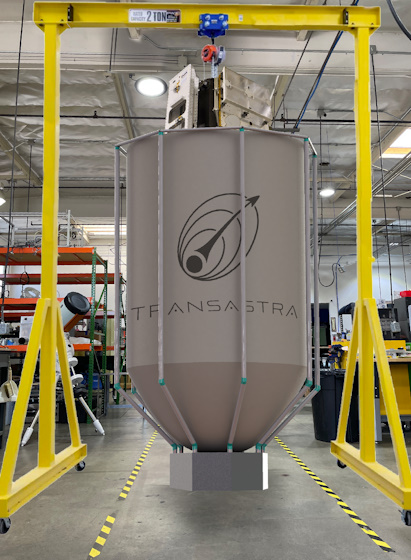[ad_1]
Cleansing House Particles: NASA Collaborates with TransAstra
As our curiosity in house exploration continues to develop, so does the issue of house particles. The Earth’s decrease orbit is now crowded with defunct satellites, rocket phases, and different remnants from house missions. This abundance of house junk will increase the danger of collisions with energetic mission components, resulting in much more particles. In an effort to deal with this problem, NASA has partnered with TransAstra, an area logistics startup, to develop idea baggage that may seize and take away house junk from orbit.
TransAstra Wins NASA Contract
Underneath NASA’s Section 2 Small Enterprise Innovation Analysis program, TransAstra has been awarded an unique $850,000 contract to scrub house particles. The startup will construct a specialised inflatable bag that may seize and safely transport the particles again to Earth’s floor. This progressive contraption will likely be examined extensively earlier than its precise launch.
The idea of utilizing seize baggage to gather house particles relies on NASA’s Asteroid Redirect Mission. In 2021, TransAstra offered its idea bag, which was aided by NASA’s Progressive Superior Ideas funding. These baggage are available varied sizes and styles and might seize a variety of particles, from defunct satellites to giant rocket our bodies. As soon as captured, the luggage shut and create an hermetic seal.

Touring to Completely different Sections of Earth’s Orbit
The inflatable bag will likely be consistently connected to a small spacecraft ferry, permitting NASA and TransAstra to journey to totally different sections of Earth’s orbit to successfully acquire and clear up particles. As soon as the bag is full, a particular propulsion mechanism will assist the spacecraft make a profitable reentry into Earth’s orbit.
Nonetheless, capturing house particles will likely be a difficult process. Because the particles is continually shifting and never static, the seize bag’s pace might want to align with the particles’ spinning pace. The bag will then carry out a precision maneuver to open, seize, and shut across the particles. TransAstra’s CEO, Joel Sercel, compares this course of to gathering “fired bullets.” Furthermore, your complete operation of capturing particles in house and returning it to Earth is fuel-intensive, so the inflatable bag goals to seize as a lot junk as attainable throughout its journeys.
Conclusion
The issue of house particles continues to develop, posing a menace to present and future house missions. NASA’s collaboration with TransAstra and the event of specialised seize baggage supply a promising resolution to this downside. Whereas the know-how remains to be in its experimental stage, it holds nice potential in cleansing up the cosmos of artificial particles. With additional developments and profitable trials, we will look ahead to a cleaner and safer house surroundings for future house exploration.
FAQs
1. What’s house particles?
House particles refers to defunct satellites, rocket phases, and different remnants of house missions floating in Earth’s decrease orbit. It poses a danger to energetic mission components and contributes to a cycle of accelerating particles.
2. What’s NASA’s collaboration with TransAstra?
NASA has partnered with TransAstra, an area logistics startup, to develop idea baggage that may seize and take away house particles from Earth’s orbit. TransAstra was awarded an unique contract value $850,000 for this venture.
3. How do the seize baggage work?
The seize baggage developed by TransAstra are available varied sizes and styles and have the power to seize particles starting from defunct satellites to giant rocket our bodies. As soon as captured, the luggage shut and create an hermetic seal.
4. How will the inflatable bag acquire particles?
The inflatable bag will likely be connected to a small spacecraft ferry, permitting NASA and TransAstra to journey to totally different sections of Earth’s orbit. The bag will seize particles by matching its spinning pace and performing a precision maneuver to open, seize, and shut across the particles.
5. What occurs when the bag is full?
As soon as the inflatable bag is full, a particular propulsion mechanism will assist the spacecraft make a profitable reentry into Earth’s orbit, carrying the captured particles.
[ad_2]
For extra info, please refer this link
